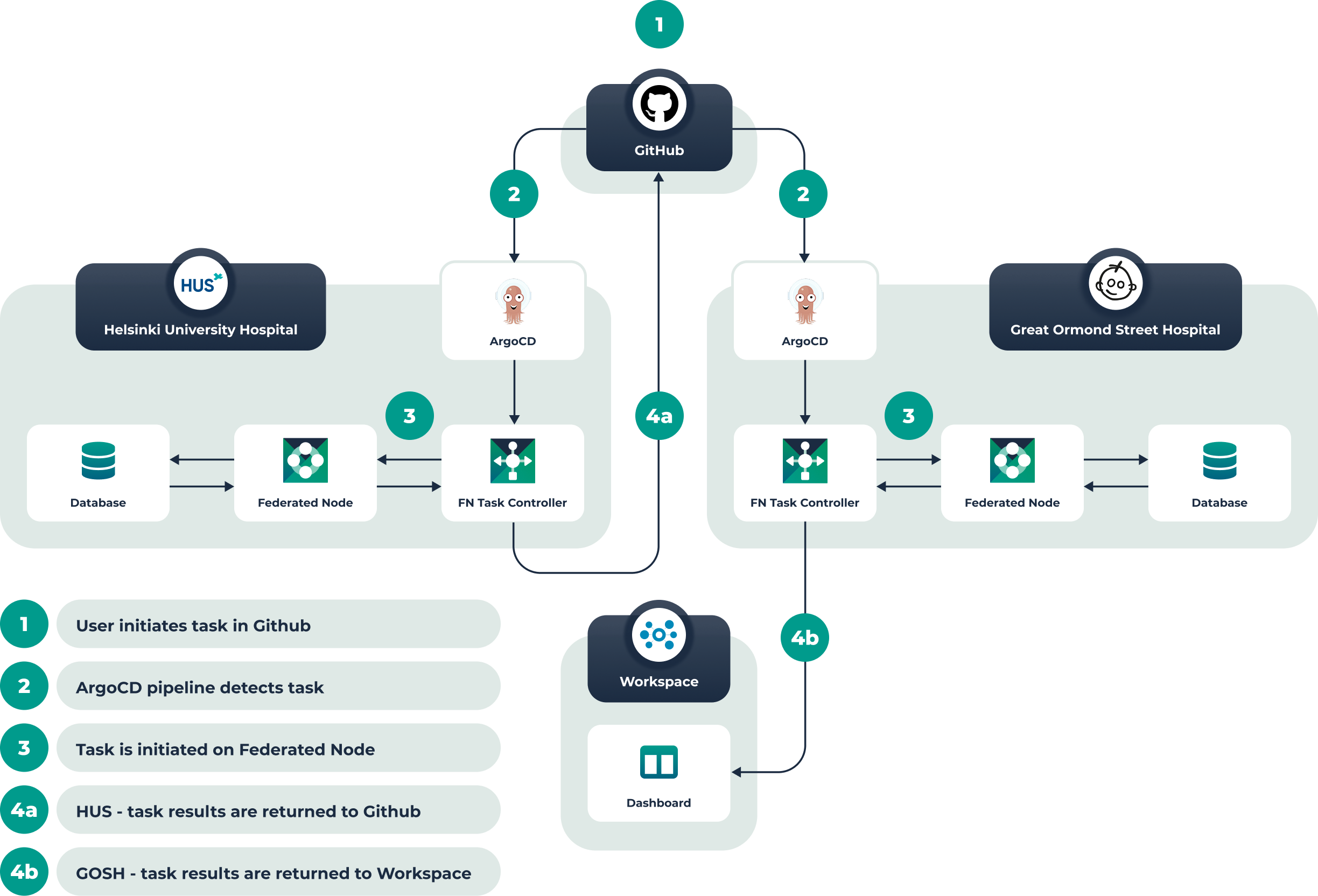Blogs & News
A Novel Approach to Sharing in the PHEMS Federated Network
Over the past year we’ve blogged on a number of occasions about Aridhia’s involvement in the PHEMS project, from presenting the initial proof of concept to the PHEMS conference to the open-source release of the Federated Node (FN), the software component used to run remote tasks in the PHEMS network.
In March 2025 we reached another important milestone in the PHEMS project: the first successful test of the core PHEMS network with our partners in Great Ormond Street Hospital (GOSH), Helsinki University Hospital (HUS) and Tietoevry.
A GitOps approach to Federation
The core PHEMS network has three main components:
• A central GitHub organisation which is used to manage the analytical code and initiate tasks
• Federated Nodes deployed to participating hospitals, in the case GOSH and HUS
• A workspace for delivering the results, in this case provided by Aridhia
The first test of the network concentrated on PHEMS use case one, sharing clinical benchmarking data. This requires the data owners to agree:
• a Common Data Model (CDM), in this case OMOP
• variables from the CDM that will be used for benchmarking
• common analytical code that will be run on each data owner’s environment to derive benchmarks from the agreed variables
GitHub is used to store and version the analytical code, and a task is initiated when a pull request (PR) is approved and merged. A GitHub pipeline then triggers the ArgoCD instance deployed with the FN, which listens for changes to this branch and when detected, pulls the code into the remote environment for the FN to run.
The data owner can configure the destination for the completed task, and when it has completed, the FN pushes the result to the chosen destination. In this test the HUS result was returned to GitHub and the GOSH result was pushed directly to the Aridhia workspace.
The benefits of this approach
Using this combination of GitHub and deployed Federated Nodes is a novel approach to creating a federated data sharing network, and as a research project PHEMS allows us to explore its benefits and potential scalability.
The native features of GitHub provide useful functionality for the PHEMS network. It acts as the central repository for analytical code which makes it easy for both analysts and data owners to track code versions, and using the PR process to initiate federated tasks gives data owners full control over when a task is run in their environment and provides a ready-made audit trail for all tasks initiated in the network. The administrative functions of GitHub also make it easy to segregate users by project and control access to the code.
In the data controller’s environment, the configuration of the deployed Federated Node and ArgoCD mean that connections to the GitHub organisation can be managed without opening inbound connections to their secure networks, a key security concern for all PHEMS partners.
Next Steps
The PHEMS partners are not yet in full agreement about the suitability of GitHub as the destination for the results of completed tasks, which is why we have tested two methods of delivering the results. However, the existence of the network means we can now fully test this method and discover if there are issues that make it unsuitable. Even if that proves to be the case, the current testing shows we can provide direct delivery to a workspace while using GitHub to manage code and initiate tasks.
April 10, 2025
Ross Stiven
Ross joined the Aridhia Product Team in January 2022. He is the Product Owner for FAIR Data Services, and Aridhia's open source federation project. He works with our customers to understand their needs, and with our Development Team to introduce new features and improve our products. Outside of work, he likes to go hill walking and is slowly working his way through Scotland's Munros.

